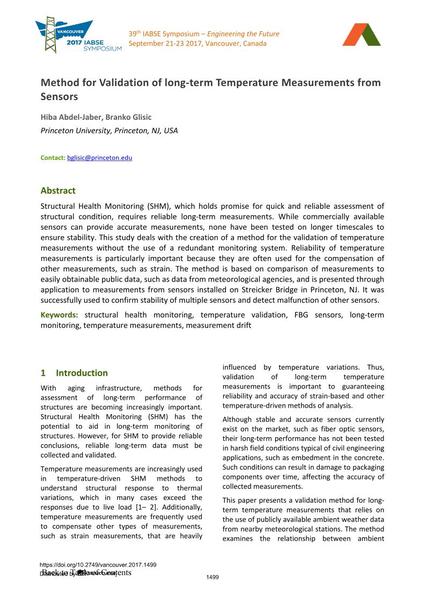Method for Validation of long-term Temperature Measurements from Sensors

|
|
|||||||||||
Détails bibliographiques
| Auteur(s): |
Hiba Abdel-Jaber
(Princeton University, Princeton, NJ, USA)
Branko Glisic (Princeton University, Princeton, NJ, USA) |
||||
|---|---|---|---|---|---|
| Médium: | papier de conférence | ||||
| Langue(s): | anglais | ||||
| Conférence: | IABSE Symposium: Engineering the Future, Vancouver, Canada, 21-23 September 2017 | ||||
| Publié dans: | IABSE Symposium Vancouver 2017 | ||||
|
|||||
| Page(s): | 1499-1504 | ||||
| Nombre total de pages (du PDF): | 6 | ||||
| Année: | 2017 | ||||
| DOI: | 10.2749/vancouver.2017.1499 | ||||
| Abstrait: |
Structural Health Monitoring (SHM), which holds promise for quick and reliable assessment of structural condition, requires reliable long-term measurements. While commercially available sensors can provide accurate measurements, none have been tested on longer timescales to ensure stability. This study deals with the creation of a method for the validation of temperature measurements without the use of a redundant monitoring system. Reliability of temperature measurements is particularly important because they are often used for the compensation of other measurements, such as strain. The method is based on comparison of measurements to easily obtainable public data, such as data from meteorological agencies, and is presented through application to measurements from sensors installed on Streicker Bridge in Princeton, NJ. It was successfully used to confirm stability of multiple sensors and detect malfunction of other sensors. |
||||
